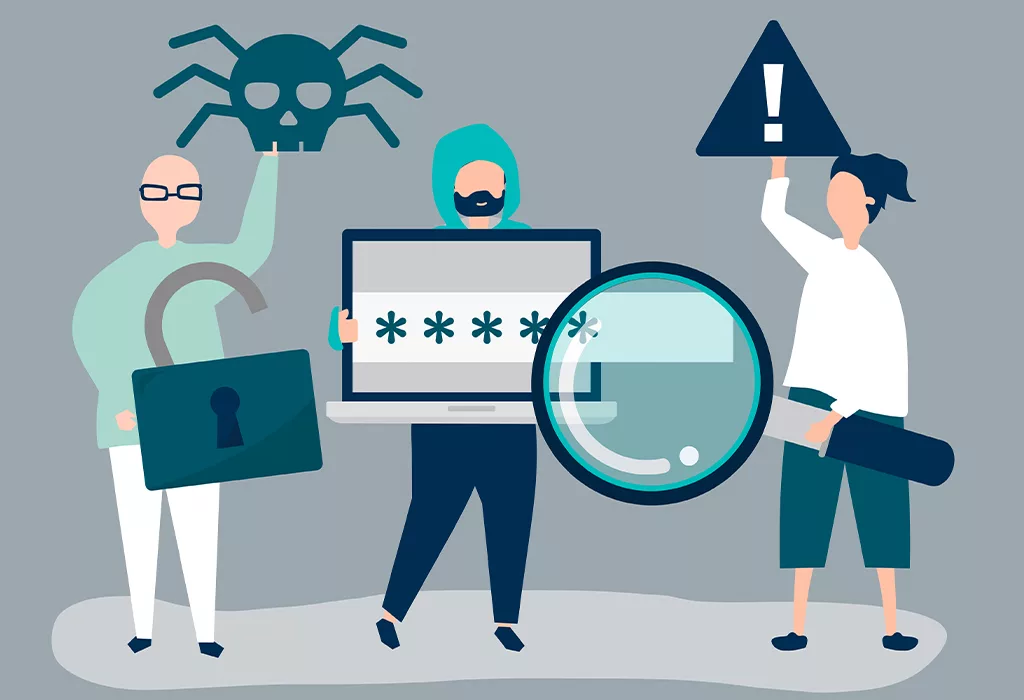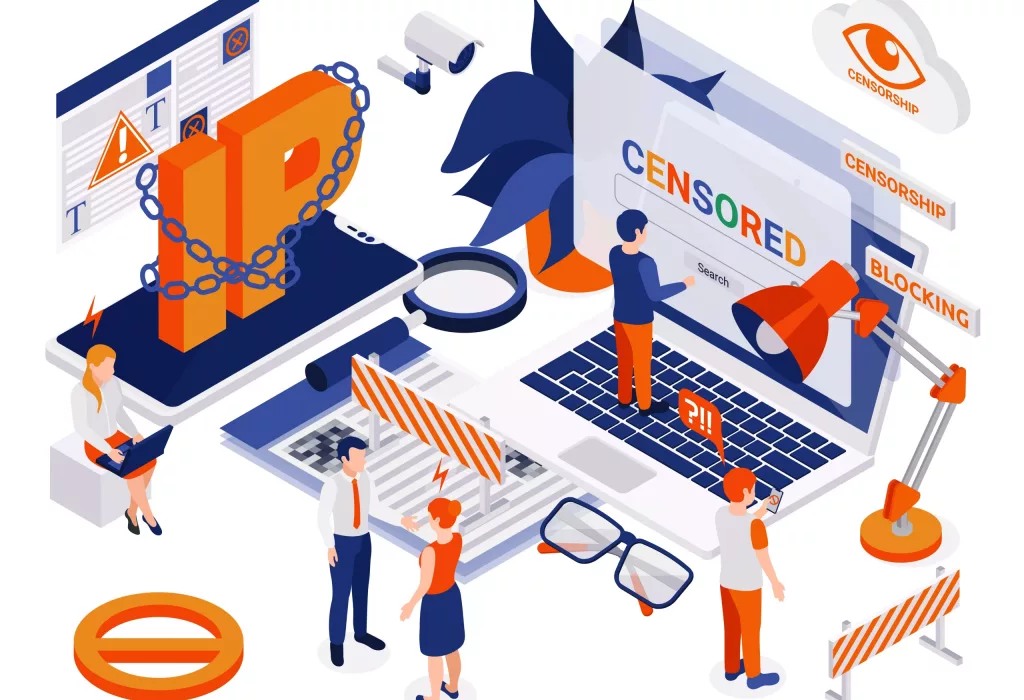by Liam Cook
December 26, 2023
0

In 2024, as businesses continue to recognise the pivotal role of online reputation in their success, the importance of Search Engine Optimization (SEO) has become even more pronounced. By implementing effective SEO strategies, businesses aim to enhance their visibility in search engine results and attract organic website traffic. However, amidst these efforts, it is essential to be vigilant about toxic backlinks, which can harm a website’s performance and online reputation.
Toxic backlinks point to a website from external sources with low-quality or spammy characteristics. These backlinks are usually obtained through unethical or black-hat SEO techniques. While backlinks from authoritative and relevant websites can boost a website’s credibility and rankings, toxic backlinks have the opposite effect, potentially leading to penalties from search engines like Google.
Identifying toxic backlinks in 2024 requires a comprehensive approach that carefully analyses the website’s backlink profile. Several indicators can help spot these harmful links. Firstly, the source of the backlink should be examined. If the linking website is irrelevant to the content of the target website or has a poor reputation, it may indicate a toxic backlink. Similarly, if the anchor text used in the backlink is overly optimised or contains spammy keywords, it could raise suspicion.
Another sign of toxic backlinks is a sudden influx from unrelated or low-quality websites. This could indicate that the website’s link profile has been manipulated or targeted by malicious actors. Additionally, analysing the overall quality of the linking domain, including factors like domain authority, trust flow, and organic traffic, can provide insights into the potential toxicity of backlinks.
To mitigate the impact of toxic backlinks, web admins and SEO professionals in 2024 should actively monitor their backlink profiles and regularly conduct link audits. These audits involve identifying toxic backlinks and taking appropriate action, such as disavowing those links through Google’s Disavow Tool or contacting web admins to request link removal. Engaging in ethical link-building practices, such as earning high-quality backlinks through content creation and outreach, is crucial for building a strong and healthy backlink profile.
In conclusion, as businesses strive to establish and maintain a positive online reputation, being aware of toxic backlinks and their potential harm is paramount. By understanding the signs of toxic backlinks and implementing effective mitigation strategies, businesses can safeguard their website’s performance, maintain a favourable online presence, and continue to benefit from the power of SEO in 2024.

Before diving into the specifics of toxic backlinks, let’s briefly discuss what backlinks are. Backlinks, or inbound or incoming links, direct traffic from one website to another. They significantly improve a website’s SEO because search engines consider them a ‘vote of confidence’ from one site to another.
Toxic backlinks, however, are the polar opposite. They are low-quality, spammy links from suspicious, untrusted, or low-authority sites. These backlinks can harm your site’s SEO ranking and lead to penalties from search engines like Google.
Toxic backlinks can have a detrimental impact on the overall search engine optimisation (SEO) of a website. The relationship between backlinks and SEO hinges on the quality rather than the quantity of these links. Over time, Google’s algorithm has become increasingly sophisticated in identifying and penalising websites that use manipulative link-building practices, including link farms or purchasing links.
When a website accumulates many toxic backlinks, it becomes associated with lower-quality and untrustworthy sites in the eyes of search engines. As a result, the affected website may experience significant drops in its search rankings, losing visibility and organic traffic. This loss in rankings can have far-reaching consequences for the website’s online visibility, brand reputation, and potential revenue generation.
To combat the issue of toxic backlinks, Google introduced the Penguin Update. This update specifically targeted and penalised websites with unnatural or spammy backlink profiles. The introduction of the Penguin Update underscores Google’s commitment to ensuring the fairness and integrity of search results and its determination to discourage manipulative SEO practices.
The Penguin Update and subsequent algorithmic adjustments have resulted in a higher emphasis on the quality and relevance of backlinks. Websites are now encouraged to obtain high-quality backlinks from authoritative and relevant sources. Building a solid and natural backlink profile that reflects the website’s credibility, expertise, and trustworthiness has become critical to effective SEO.
In summary, toxic backlinks can severely impact a website’s SEO. Accumulating numerous low-quality or manipulative backlinks can lead to penalties from search engines and cause a significant decline in search rankings. To safeguard their SEO, website owners and digital marketers must prioritise the acquisition of high-quality and relevant backlinks while avoiding unethical link-building tactics.

Identifying toxic backlinks can be tricky, but several red flags can help you spot them:
Irrelevant and unrelated sites pose a significant problem when it comes to backlinks. When a backlink originates from a website without a connection to your website’s niche or industry, it is generally considered a toxic link. To illustrate this point, let’s use a pet supplies website linked to a cryptocurrency blog. The two topics are entirely unrelated and have no inherent connection. This kind of backlink needs to be more straightforward for visitors and sends a misleading signal to search engines.
When search engines analyse backlinks, they rely on them to indicate a website’s authority, credibility, and relevance within a particular field. If search engines discover numerous backlinks from unrelated sites, it raises suspicions of artificial or manipulative link-building practices. Such tactics can harm a website’s search engine rankings and, ultimately, its online visibility.
By associating your pet supplies website with a cryptocurrency blog through an irrelevant backlink, you are diluting the focus and theme of your website. Visitors who arrive at your site from such links will likely be disappointed, as they expected content relevant to cryptocurrency but found themselves in a completely different context. This leads to a negative user experience and undermines your website’s credibility and trustworthiness.
To maintain a solid online presence and enhance your search engine rankings, it’s crucial to prioritise quality backlinks from authoritative and relevant sources. Backlinks from websites within your industry or niche are more likely to provide value to your website, as they signal to search engines that your content is highly regarded and respected within your field. By building relevant backlinks, you can establish your website as a reputable source of information and
improve its overall visibility in search engine results.
Links from low-authority sites can harm a website’s overall search engine optimisation (SEO) strategy. Regarding backlinks, links pointing back to a specific website, the authority and credibility of the linking site play a crucial role. Domain Authority (DA) is a metric introduced by Moz, a well-known SEO software provider, to assess the potential ranking performance of a website in search engine results.
A website must have a high DA score to maintain trustworthiness, credibility, or relevance in the eyes of search engines. Consequently, when such sites link to other websites, their generated backlinks can be considered toxic or harmful. Search engines evaluate the quality of backlinks to determine the authority and reliability of a website. Therefore, if a website receives numerous backlinks from low-authority sites, search engines may perceive it as having a questionable reputation or being associated with spammy practices.
Low-quality or new websites often have low DA scores. These sites may need more content, better user experience, or established credibility within their respective industries. Consequently, obtaining backlinks from such places might not enhance a website’s visibility or ranking potential. Building backlinks from high-quality, authoritative websites with a solid online presence and a good track record is generally advisable.
By prioritising backlinks from authoritative sources, websites can boost their credibility and improve their chances of ranking higher in search engine results. These backlinks act as votes of confidence from reputable sites, signalling to search engines that the website being linked to is trustworthy, relevant, and deserving of a higher ranking. A well-rounded backlink profile from high-authority sites can positively impact a website’s organic search visibility and overall SEO efforts.
Links from spammy websites significantly threaten the quality and credibility of a website’s backlink profile. When a website receives backlinks from platforms notorious for spamming or seeming to exist solely to manipulate search engine optimisation (SEO), these links are typically considered toxic. Such websites tend to exhibit several characteristics that make their backlinks undesirable.
Firstly, spammy websites frequently feature poorly written and low-quality content. Their articles, blog posts, or product descriptions may contain grammatical errors, nonsensical text, or plagiarised content. This lack of quality is a red flag for search engines striving to deliver reliable and relevant user results.
Secondly, spammy websites often inundate their pages with excessive advertisements. These ads can be intrusive, disruptive, and irrelevant to the website’s content, negatively impacting the user experience. The excessive use of ads may indicate that the site prioritises monetisation over providing valuable and informative content.
Finally, spammy websites tend to have an unusually high number of outbound links. These links are often unrelated to the website’s content or provide little value to users. Search engines interpret excessive outbound links as a signal of link manipulation, raising suspicions about the website’s credibility and authority.
In conclusion, backlinks from spammy websites with poorly written content, excessive ads, and many irrelevant outbound links are typically toxic. These links can harm a website’s reputation, authority, and search engine rankings. Therefore, website owners and SEO practitioners must be cautious and avoid acquiring such links to maintain a healthy and reputable online presence.

The landscape of SEO is continuously evolving, and the tools and methods we use to manage our backlink profiles need to grow with it. In 2024, some tools and strategies have proven particularly effective in spotting and dealing with toxic backlinks. With search engine algorithms becoming more sophisticated, it is essential to stay ahead of the curve and ensure that our backlink profiles are clean and free from toxic links that can harm our website’s rankings and reputation.
Advanced backlink analysis software is one effective tool that has gained prominence in 2024. These tools use advanced algorithms and machine learning techniques to assess the quality and relevance of backlinks pointing to our website. They can analyse various factors such as domain authority, anchor text, link placement, and contextual relevance to determine the toxicity of a backlink. By leveraging these tools, we can identify and flag toxic backlinks accurately.
Additionally, manual backlink audits are still a valuable strategy in 2024. involves manually reviewing each backlink pointing to our website and assessing its quality and relevance. While this approach can be time-consuming, it allows for a more comprehensive analysis of our backlink profile. By examining factors such as the source website’s credibility, the nature of the linking page, and the overall context of the link, we can identify potentially toxic backlinks that automated tools might miss.
Conducting a thorough competitor analysis is another effective strategy for dealing with toxic backlinks. We can gain valuable insights into potentially poisonous sources by analysing our competitors’ backlink profiles. It can help us identify common patterns or sources that consistently link to multiple websites in our niche. We can protect our website from potential harm by disavowing or contacting the respective website owners to remove such toxic backlinks.
Regular monitoring of our backlink profile is crucial in 2024. Utilising tools that provide real-time alerts for new backlinks can help us stay on top of our link-building efforts and quickly identify suspicious or toxic links. This proactive approach allows us to take immediate action and prevent any negative impact on our website’s SEO performance.
Furthermore, keeping an eye on industry trends and staying informed about the latest SEO updates is vital. Search engines regularly refine their algorithms to better identify and penalise websites with toxic backlinks. By staying up to date, we can adapt our strategies and ensure that our backlink profile remains clean and healthy.
Backlink analysis tools such as Ahrefs, SEMrush, and Google’s own Search Console have sophisticated features allowing you to analyse your backlink profile comprehensively. These tools will enable you to discover and assess your backlinks, their source, and the authority of the source website.
Manual review is a meticulous and labour-intensive process that can offer valuable insights into your backlink profile. By dedicating time and effort, you can thoroughly comprehend the relevance and quality of the websites linking to your own. This approach entails meticulously examining each site on the list, scrutinising factors like domain authority, trustworthiness, and content relevance. By delving into the specifics of each backlink, you can identify potential issues, such as low-quality or spammy links, that may harm your website’s search engine rankings. Though time-consuming, this hands-on method empowers you to have complete control and make informed decisions to enhance your backlink profile.
If you need more time to handle the process yourself or need more time, professional SEO services like Millenio can provide a thorough backlink audit and removal service. They have the expertise to identify and remove toxic backlinks, protecting your site’s reputation and search engine rankings.

Once you’ve identified the toxic backlinks, the next step is removal. Here’s a quick guide on how to do it:
When dealing with a toxic backlink, the initial approach involves contacting the website owner responsible for hosting the link. It is crucial to approach this communication with politeness and professionalism. Begin by drafting a concise and respectful message requesting the removal of the link leading to your website. Clearly explain the reasons behind your request, emphasising that the connection is potentially harmful or irrelevant to your site’s content.
While it is ideal for the site owner to comply with your request promptly, it’s essential to acknowledge that this may only sometimes be the case. In certain instances, website owners might refuse to remove the link or demand a fee in exchange for its removal. Unfortunately, this situation can arise, especially if the website has a dubious reputation or engages in questionable practices.
If the website owner requests a fee to remove the link, carefully evaluate the situation before proceeding. Consider the potential benefits of paying the price versus the potential harm caused by the toxic backlink. It may be worth assessing the link’s impact on your website’s reputation, search engine rankings, and overall user experience.
Ultimately, deciding to pay a fee or explore alternative options rests with you. Keep in mind that there are other strategies and techniques available to address toxic backlinks, such as disputing the link through search engine tools or using the services of a professional SEO agency to assist in managing your website’s link profile.
Remember, the process of removing toxic backlinks can be time-consuming and challenging. Patience, persistence, and a proactive approach are essential when resolving such issues.
Using the Google Disavow tool is an effective strategy when faced with a situation where the site owner either refuses to remove a particular link or demands payment for its removal. This tool empowers website owners to inform Google to disregard specific links when evaluating their ranking. However, it is essential to note that disavowing links should only be considered a last resort, as Google views it as a potent and decisive action.
By employing the Disavow tool, website owners can submit a disavow file containing a list of URLs or domains they wish Google to overlook when analysing their site’s backlink profile. This file indicates to Google that certain links should not be considered while determining the site’s authority and relevance. However, judiciously exercising caution and using the Disavow tool is essential, as incorrect or excessive disavowal can potentially harm the site’s overall ranking and visibility.
Before resorting to disavowing links, it is crucial to exhaust all other possible avenues for link removal, such as contacting web admins, utilising the Google Link Removal Tool, or negotiating with the site owner directly. These efforts demonstrate a genuine attempt to maintain a high-quality backlink profile and adhere to Google’s guidelines.
When initiating the disavowal process, it is recommended to document all communication attempts made with the site owner and keep records of unsuccessful removal requests or unreasonable demands. This documentation can serve as supporting evidence if any issues arise in the future.
Remember, disavowing links should only be employed as a last resort when all other options have been exhausted and when the presence of certain links poses a significant risk to the site’s search engine rankings. Therefore, it is crucial to approach the Disavow tool with caution, fully understanding the potential consequences and seeking professional advice if necessary.
In the ever-evolving world of SEO, keeping track of your backlink profile is crucial. Toxic backlinks can drastically affect your site’s search engine rankings and reputation. However, by staying vigilant, using the right tools, and partnering with reliable SEO professionals like Millenio, you can ensure that your backlink profile remains healthy and beneficial to your site’s SEO.
Remember, quality always trumps quantity when it comes to backlinks. Aim for links from reputable, related websites, and always watch for the toxic ones!

